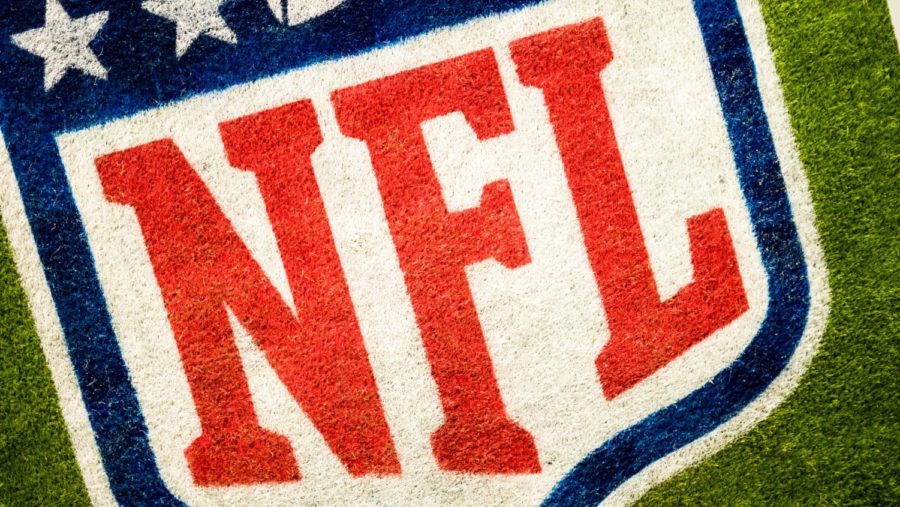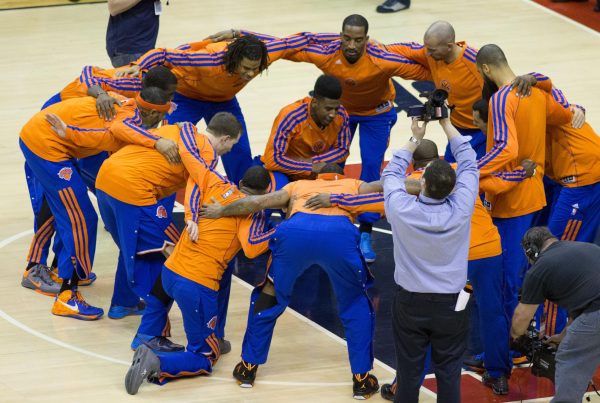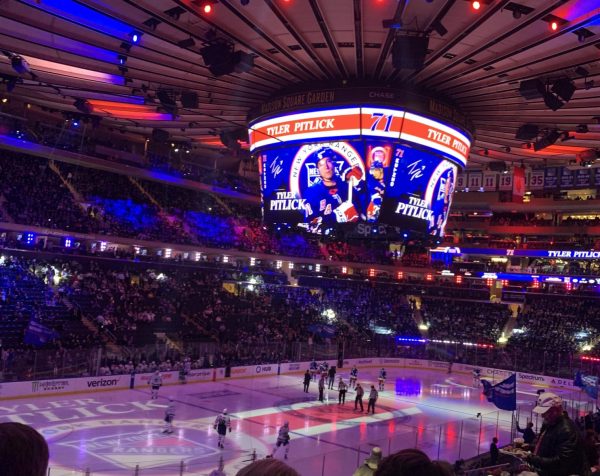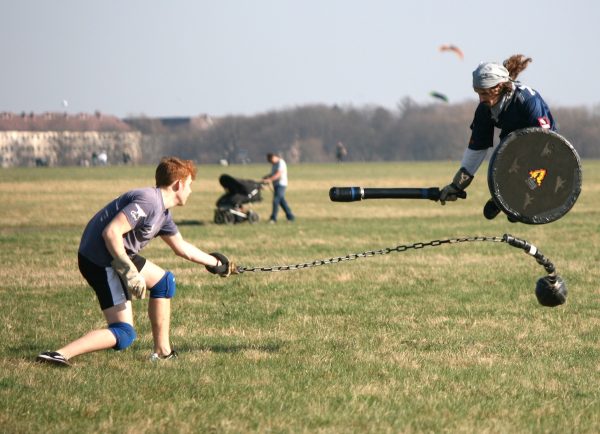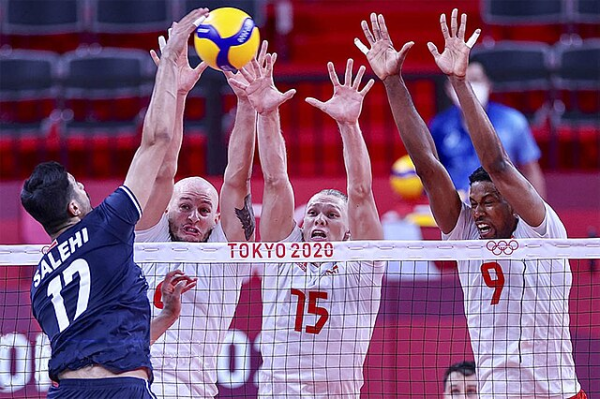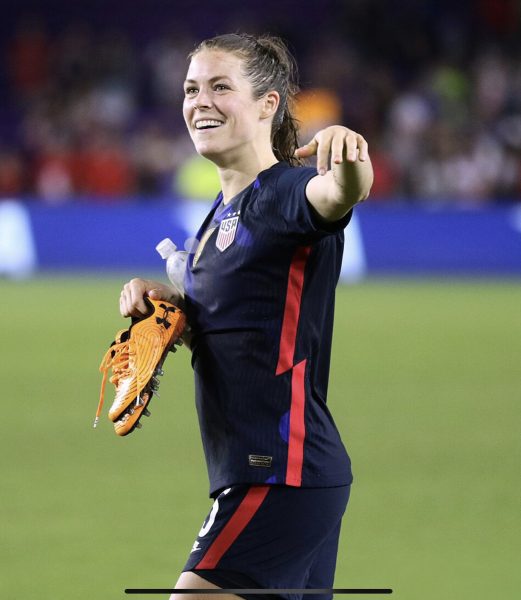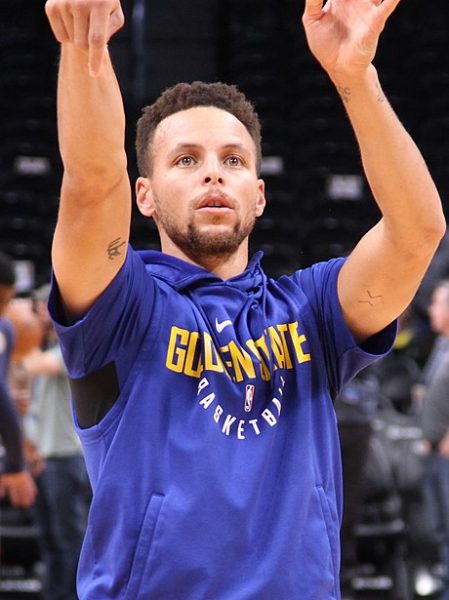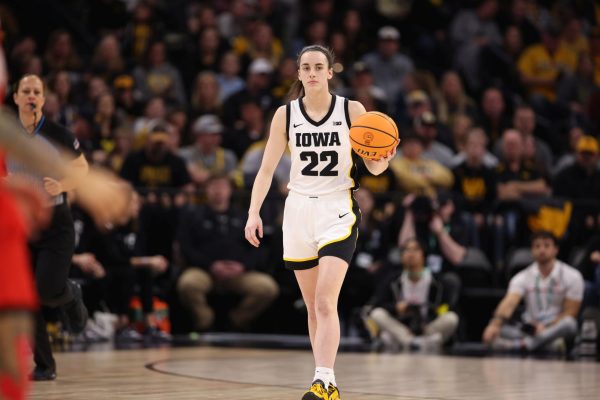Thrilling, Unpredictable, and League-Changing: Looking Back at the NFL’s Offseason for the Ages
In football, many say that nothing is a guarantee. This offseason proved just that.
The NFL offseason delivered a spectacle, as the league has undergone a seismic change. Now, all we can do is wait until the games kick off to see how massive that change truly is.
Massive contracts. Short retirements. Shocking trades. A broadcasting frenzy. An unpredictable draft.
The result? A seismic change in the NFL that will impact its teams, players, coaches, and fans for years to come. Players are starting to demand greater control over their contracts and teams, as indicated by the never-ending list of stars that requested trades or massive deals. Teams will need to adapt to these new conditions, or risk losing their limited window for success.
In that matter, some teams might have succumbed to such a fate, while others have leaped at the opportunity.
March Madness
The first domino fell in early March 2022 when the Broncos acquired Super-Bowl-winning quarterback (QB) Russell Wilson from the Seahawks in exchange for a handful of players and draft picks. Wilson’s move set up a slew of trades in the days following, with Colts QB Carson Wentz being dealt to the newly named Washington Commanders, and Bears edge rusher (EDGE) Khalil Mack moving to the Los Angeles Chargers.
Just as the madness seemed to die down, free agency kicked the action into high gear once again. With free agents (players out of contract with their current teams) seeking massive contracts from their suitors, many players with existing deals demanded greater guarantees than most teams were willing to provide. This trend had immediate impacts, especially in the wide receiver market, such as in the case of Christian Kirk. The Jacksonville Jaguars signed Kirk to an $18 million a year deal, even though he never had a 1,000 yard receiving season when playing for the Arizona Cardinals. Despite this, he quickly became one of the highest earning receivers in the league.
Kirk’s contract angered a lot of top receivers, including Davante Adams and Tyreek Hill. Adams, who is widely considered to be the best receiver in the league, sought a contract extension of up to $25 million per year. However, Adams and the Green Bay Packers couldn’t come to a compromise, resulting in a bitter impasse. With no other options, the Packers traded Adams to the Las Vegas Raiders, his preferred team, so that he could play with Derek Carr, his former college quarterback.
Tyreek Hill’s move came about for the same reason. Hill and the Kansas City Chiefs could not come to an agreement over a long-term extension, prompting him to request a trade. Both the New York Jets and the Miami Dolphins proposed offers to the Chiefs, to which Hill selected the latter. Then, the Dolphins immediately locked down Hill’s services, signing him to a massive 4-year, $120 million extension, making him the highest paid receiver in the sport.
This sudden movement in the market has placed the wide receiver position in special regard. Previously, only disgruntled quarterbacks who demanded trades would lobby with their teams until requests were satisfied. However, many experts now believe that such a distinction belongs to wide receivers as well. These players now have increased control over their careers and no longer need to wait for an opportunity to arise. These demands have made the existence of so-called “super teams” possible, just like in the NBA. This “super team” dynamic will enable elite players to seek trades to their preferred teams and attract other superstars to join them in the process.
While wide receiver transactions made massive headlines, they paled in comparison to the monumental quarterback moves. This offseason will certainly change the outlook of the league for years to come, primarily due to the QB trades and signings. Teams in need of a QB (many of which are only a “quarterback away” from competing for a super bowl) did not hesitate to make the move for their guy. Following the Russell Wilson and Carson Wentz deals earlier in the offseason, other teams came prepared to pay up to fill the huge gap in their team.
These circumstances led to a shocking development in Deshaun Watson’s legal case. Watson, who shined for the Houston Texans in his first four seasons, sat out the 2021 season as court challenges unfolded amidst accusations of sexual misconduct by twenty two women. This case immediately put Watson’s career in jeopardy.
However, the charges against Watson were later dropped by a Grand Jury. Watson and the Texans agreed to part ways, giving Watson the freedom to select his next team due to his no trade clause. His decision was one of the most awaited moments of the offseason.
To everyone’s surprise, Watson selected Cleveland. The Browns, who had drafted QB Baker Mayfield only four years earlier with the first overall pick, gave up a massive haul for Watson that included their 2022, 2023, and 2024 first round draft picks.
Watson’s move led to Mayfield seeking a trade out of Cleveland. But given his subpar performances over the past few seasons, many teams opted to stay out of the market for Mayfield.
Many still worry about Watson’s future in the league, however. League officials have discussed suspending Watson during the upcoming season, whether that be for a couple of games or the entire season. These woes could upend any chance that Watson returns to his superstar form with the Browns.
The trend in the quarterback market is clear; some teams have opted to go with proven veterans in hopes of competing immediately while others have settled for free agency or the draft as a means of securing their future. With so many signal callers changing teams, there is no doubt that the power balance within the NFL is about to shift dramatically.
Free Agency Frenzy
March’s madness wasn’t limited to the trade market: free agency was just as chaotic with massive contracts being handed out left and right. The biggest spenders were the Jaguars, who gave $175.3 million in guaranteed earnings to their new signings. While Christian Kirk’s contract was the highlight, the Jaguars sought to improve on both sides of the ball. Players like guard (G) Brandon Scherff, cornerback (CB) Darious Williams, and tight end (TE) Evan Engram should prove to be impactful starters that help fortify the team’s defense and accelerate the development of QB Trevor Lawrence, the first overall pick in last year’s draft. Lawrence struggled in his first season, and should benefit from having more flexibility on offense.
Critics have argued that the Jaguars spent more money than they had to, but General Manager Trent Baalke’s spree comes with cause. The team has consistently been the worst franchise in the league over the past two seasons, combining for a meager 4 wins in 33 games. In order for the team to compete at a higher level, these moves, regardless of the cost, are somewhat necessary.
The Los Angeles Chargers also made waves in the free agency market, making crucial moves on the defensive side of the ball. The team’s offense is already one of the league’s best, led by young QB Justin Herbert. Now, the team’s star-studded defense will give them a real chance to not only compete for the AFC West crown, but the Super Bowl as well. In addition to the pickup of Khalil Mack via trade, the Chargers added star CB JC Jackson, defensive tackle (DT) Sebastian-Joseph Day, and a couple of other defensive players. The pass rush of Joey Bosa and Khalil Mack makes for one of the best in the league, and a secondary consisting of stars Derwin James, JC Jackson, and Asante Samuel Jr. should frazzle opposing offenses every week.
In contrast, the Miami Dolphins directed all of their attention to the offense. Their spending was immense, as the team signed five offensive starters: running backs Chase Edmonds and Raheem Mostert are both versatile, explosive athletes who will immediately provide a spark in the backfield. WR Cedrick Wilson came out of nowhere for the Cowboys last season, and will now play a huge role in the slot. Wilson’s presence, along with Tyreek Hill and Jaylen Waddle, immediately renders Miami’s receiving core one of the best in the league.
The team also invested in the trenches, adding OT Terron Armstead and G Connor Williams to the left side of the line.
With new head coach Mike McDaniel entering the fold, the Dolphins offense is primed for massive improvement. McDaniel is an offensive mastermind; he was the offensive coordinator last year for the San Francisco 49ers, and has played a huge role in the team’s offense over the past few seasons. Now, the Dolphins should benefit from McDaniel’s expertise as well.
In addition to its standout signings, the Dolphins resigned TE Mike Gesicki and EDGE Emmanuel Ogbah, two of its standout players last season. Gesicki was franchise tagged, a designation that a team can give to only one of its free agents each season. Under the franchise tag, a player is binded to their team and receives a one-year contract in line with higher earning players at the same position. On the other hand, Ogbah received a long-term extension, ensuring that he remains a Dolphin for years to come.
While all of these moves make the Dolphins seem like a contender, all progress depends on the play of QB Tua Tagovailoa. Tagovailoa struggled in his first two years, and must take a step forward this season with improved playmakers, protectors, and reinforcements on the field. However, competing in a strong AFC East against a Super Bowl contender in the Bills, a greatly improved Jets team, and Bill Belichick’s Patriots will not be an easy task.
Draft Drama
In spectacular fashion, this offseason had one of the most unpredictable drafts of all time. In most years, there is a general consensus as to how the chips will fall, even if there is slight variance. However, 2022 was an anomaly. The Jaguars’ first pick was as big a mystery as any, with everyone awaiting their decision until the time finally came.
At first, it appeared that Michigan EDGE Aidan Hutchinson would be the obvious selection. Hutchinson had a stellar season, getting 14 sacks and leading a dominant pass rush. However, the Jaguars looked beyond Hutchinson alone and cast a wide net.
In the end, the Jaguars went with Georgia EDGE Travon Walker, a player with immense talent but few results. Walker only had 6 sacks for Georgia’s title-winning defense last year, but has excellent upside and potential. Many experts praised the Jaguars for selecting a pass rusher, but remained more confident in Hutchinson’s potential.
Hutchinson’s fall did not last long, however. The Detroit Lions turned in the card for Hutchinson, selecting him as the second overall pick. Hutchinson aligns perfectly with the team: he grew up in the suburbs of Detroit watching the Lions, and later played football for the University of Michigan. Beyond his upbringing, Hutchinson is also a ferocious pass rusher that immediately makes the Lions’ pass rush viable after being practically useless in recent years.
The next three picks were also up in the air, as the Texans, Jets, and Giants awaited their turn. The Texans and Jets went with cornerbacks Derek Stingley Jr. and Ahmad “Sauce” Gardner, respectively. Stingley showed massive potential during his time at LSU but frequently struggled with injuries, making him a risky selection. Gardner, who experts ranked as the top corner in the draft, allowed zero touchdowns throughout his college career, an incredibly difficult feat. The Giants rounded out the top five with EDGE Kayvon Thibodeaux.
The entirety of the top five was made up by defensive players for the first time in over thirty years. All of those players turned out to be busts, meaning that this year’s selections are left to rewrite the script.
The draft also produced great drama rarely seen at the event. A record-setting nine trades were made in the first round, with some involving current players. The Cardinals ceded their first round pick to the Ravens in exchange for WR Marquise “Hollywood” Brown. Brown is a great asset for a Cardinals offense and will look to reunite with college teammate Kyler Murray. While a good receiver, Brown most definitely does not equate to first round value.
Just four picks later, the Eagles shocked the league even further, trading their first and third rounders for Titans WR AJ Brown. Brown is a coup for the Eagles, who desperately needed a wide receiver. He immediately received a 4-year, $100 million extension, quite the deal for the twenty four year old. The Titans used their pick to take Brown’s replacement, Treylon Burks, but Brown’s loss will surely be felt regardless.
Winners
Every draft has clear winners who work the board and make their teams better in the process. This year, the two that stand out are the Jets and the Ravens.
The Jets arguably drafted the top cornerback, wide receiver, and running back in the class with Sauce Gardner, Garrett Wilson and Breece Hall. Gardner and Wilson weren’t even the first players selected at their position, and Hall was a projected first round pick who the Jets got in the second round. They also traded back into the latter half of the first round to select EDGE Jermaine Johnson, who was projected to be a top 10 pick. Getting him at pick 26 is potentially the steal of this draft.
The Ravens also drafted especially well, which isn’t an unusual circumstance. The team knows how to play the board and gain great value with all of their selections. Their first round picks, safety Kyle Hamilton and center Tyler Linderbaum, are formidable starters that address both offensive and defensive needs. Additionally, the Ravens got Michigan EDGE David Ojabo in the second round, a player that was once a top ten prospect before tearing his ACL.
Losers
There were two clear losers of this draft: the Patriots and the Cowboys. Both teams failed to address their needs and made risky selections that could backfire.
The Patriots initially traded back in the first round with the Chiefs, and made their pick at 29, selecting G Cole Strange from Chattanooga. Strange was projected to be a late third or early fourth round selection, so this pick was strange to say the least.
In the second round, the team selected Baylor WR Tyquan Thornton, who was a projected fifth-round selection. Thornton has great speed, running a ridiculous 4.28 40 yard dash at the scouting combine. However, he doesn’t have much to offer besides his speed, with issues such as catching ability and health playing a role. QB Bailey Zappe was another questionable selection in the fourth round, as the Patriots arguably wasted their pick on a position they didn’t need. However, Bill Belichick’s seemingly surprising selections often turn out very successful, so the jury is yet to reach a verdict on this one.
The Cowboys had an underwhelming class as well. While Jerry Jones’ past few drafts have been successful, this one appears more questionable. First round pick Tyler Smith, a guard from Tulsa, was not the best player available on the board and has some concerns. Sam Williams, the team’s second round pick, has some off-field issues that make him a little risky. With a clear need in the secondary, the Cowboys failed to address the position entirely, instead leaving in place a unit (with the exception of CB Trevon Diggs) that showed to be underwhelming last year.
Conclusions
There is lots to take away from this thrilling NFL offseason. Beyond all of the moves, there is a lot that got lost in the madness. Tom Brady retired and then reversed course only a month later. Former Dolphins coach Brian Flores sued the league for discrimination, claiming that he was treated differently due to his race. A battle for broadcasters and network contracts ensued, ushering in a new era of TV deals for the league. Falcons WR Calvin Ridley was suspended for betting on league games after sitting out most of last season due to personal issues, a suspension many believed was too harsh. Super Bowl winning coaches Sean Payton and Bruce Arians stepped down from their positions, leaving their teams with huge holes to fill.
All of these circumstances pose huge questions for the NFL in the near future, as September 2022 comes ever closer. Fans can’t wait for their teams to hit the field again, with many wondering whether their franchise will still be able to manifest victory and success like they used to. Look no further than the AFC West, which appears to be one of the best divisions in NFL history. The Chiefs, Chargers, Broncos, and Raiders are all elite franchises with Super Bowl potential, making all four of them massive threats. Many are anxiously waiting to see what happens there.
It is clear that the NFL is changing, with this offseason bringing forth a whole new era for the league. Now, all we can do is eagerly wait until the first ball is kicked off the tee, and hope that the greatest sport in the world delivers as usual.
Massive contracts. Short retirements. Shocking trades. A broadcasting frenzy. An unpredictable draft. The result? A seismic change in the NFL that will impact its teams, players, coaches, and fans for years to come.
Ethan Weinberg is an Editor-in-Chief for 'The Science Survey.” Ethan enjoys journalistic writing, as he believes that by making sense of the issues on...

